GrabCAD

Swashplateless rotor head
by GrabCAD
Last crawled date: 1 year, 11 months ago
https://pocharitechnologies.com/2019/03/01/electronic-actuated-rotor-head/
Many mistakenly assume slip rings are required to achieve electric IBC, this is incorrect. Pochari Technologies has solved the long-standing issue facing IBC which was the need fo either hydraulic slip rings or electric slip rings. A simple solution is where a permanent magnet generator is mounted on the rotating assembly, a shaft passes through the drive system to the fixed assembly, providing constant power as long as the rotor system is spinning. The system provides a comparable if not higher level of redundancy than traditional swashplate-pitch link hydraulic rotor control systems while eliminating all their disadvantages. IBC provides up to an 80% reduction in vibration and significant reduction in acoustic signature as well as reduced power consumption. IBC also increases rotorcraft agility and maneuverability.
“Rotorcraft such as helicopters commonly make use of a complex mechanical device known as a “swashplate” to control collective pitch (for providing a change in altitude) and cyclic pitch (for providing change in attitude, and thus maneuvering). By actuating the angles of attack of the rotor blades, each of which is capable of rotating at its root, where it connects to the rotor head, the collective and cyclic pitch of the helicopter can be controlled”
The swashplate, which comprises a non-rotating lower plate movably connected to a rotating upper plate by bearings, is typically located just below the rotor head on the axis of the main rotor shaft, and is itself typically actuated by hydraulic cylinders mounted to the chassis. When rotorcraft controls actuate the hydraulic cylinders, the hydraulic cylinders move and pitch the non-rotating lower plate up and down and at an angle with respect to the plane of the main rotor. This up-and-down movement and/or pitch is transferred to the rotating half of the swashplate. The rotating half of the swashplate thereby transmits the motion of the stationary actuators to the several rotating pitch links, which connect the upper plate of the swashplate to the blade roots and act as lever arms, increasing or decreasing the blades’ angle of attack.
A swashplate, however, disadvantageously adds weight and aerodynamic drag to a rotorcraft, which can in turn reduce power, speed, maneuverability, and increase cost of flight. Another major disadvantage of a swashplate is that it limits control inputs to one per revolution of the rotor blades (except in the case of a three-bladed rotor). In addition, because of its mechanical complexity and the fact that it provides a single point of critical failure, swashplates necessitate many hours of inspection and preventative maintenance. The pitch links of a swashplate, which occupy a relatively large volume on the upper side of a rotor shaft and are therefore difficult to shield, also introduce significant ballistic vulnerability, as from missile attack, flak, and other flying debris. Damage to any one of the pitch links results in a loss of rotorcraft control.
Many mistakenly assume slip rings are required to achieve electric IBC, this is incorrect. Pochari Technologies has solved the long-standing issue facing IBC which was the need fo either hydraulic slip rings or electric slip rings. A simple solution is where a permanent magnet generator is mounted on the rotating assembly, a shaft passes through the drive system to the fixed assembly, providing constant power as long as the rotor system is spinning. The system provides a comparable if not higher level of redundancy than traditional swashplate-pitch link hydraulic rotor control systems while eliminating all their disadvantages. IBC provides up to an 80% reduction in vibration and significant reduction in acoustic signature as well as reduced power consumption. IBC also increases rotorcraft agility and maneuverability.
“Rotorcraft such as helicopters commonly make use of a complex mechanical device known as a “swashplate” to control collective pitch (for providing a change in altitude) and cyclic pitch (for providing change in attitude, and thus maneuvering). By actuating the angles of attack of the rotor blades, each of which is capable of rotating at its root, where it connects to the rotor head, the collective and cyclic pitch of the helicopter can be controlled”
The swashplate, which comprises a non-rotating lower plate movably connected to a rotating upper plate by bearings, is typically located just below the rotor head on the axis of the main rotor shaft, and is itself typically actuated by hydraulic cylinders mounted to the chassis. When rotorcraft controls actuate the hydraulic cylinders, the hydraulic cylinders move and pitch the non-rotating lower plate up and down and at an angle with respect to the plane of the main rotor. This up-and-down movement and/or pitch is transferred to the rotating half of the swashplate. The rotating half of the swashplate thereby transmits the motion of the stationary actuators to the several rotating pitch links, which connect the upper plate of the swashplate to the blade roots and act as lever arms, increasing or decreasing the blades’ angle of attack.
A swashplate, however, disadvantageously adds weight and aerodynamic drag to a rotorcraft, which can in turn reduce power, speed, maneuverability, and increase cost of flight. Another major disadvantage of a swashplate is that it limits control inputs to one per revolution of the rotor blades (except in the case of a three-bladed rotor). In addition, because of its mechanical complexity and the fact that it provides a single point of critical failure, swashplates necessitate many hours of inspection and preventative maintenance. The pitch links of a swashplate, which occupy a relatively large volume on the upper side of a rotor shaft and are therefore difficult to shield, also introduce significant ballistic vulnerability, as from missile attack, flak, and other flying debris. Damage to any one of the pitch links results in a loss of rotorcraft control.
Similar models
grabcad
free

Bell-206 Main Rotor Blades Pitch Angle Control System
....
one of the modules of main rotor blades steering system is a swashplate. this project concentrates on the swashplate assembly.
grabcad
free

HELICOPTER ROTOR BLADES
...ed by a swashplate connected to the helicopter flight controls. helicopters are one example of rotary-wing aircraft (rotorcraft).
grabcad
free

Helicopter Rotor
...arboxes along the tail boom. the blade pitch is typically controlled by a swashplate connected to the helicopter flight controls.
grabcad
free

Helicopter transmission system
...helicopter transmission system
grabcad
rotorcraft transmission with hydraulic servos and rotor head system.
grabcad
free

5 Blade RC Helicopter Swash Head
.... power is supplied from a large gas engine or turbine to a large primary pulley (not shown) at the bottom of the primary shaft.
grabcad
free

Tail rotor with swash plate
...main constant and when a rotor shaft is rotating, you will see how is changing a angle of blades of tail rotor within one cycle.
thingiverse
free

Blade 230s Rotor Head Pitch Link by kingdallen
...ing whatever slicer you prefer. petg filament is recommended but pla may work. print with the wide end of the hole facing down.
grabcad
free

Hydrogen powered turbine helicopter
...ydrogen is the world's first company developing freighter aircraft and rotorcraft powered by liquid hydrogen-fueled turbines.
3dwarehouse
free

Sketchyphysics Helicopter Swashplate Model
... rotor head of helicopter blade movement #aircraft #animation #blade #copter #heli #helicopter #rotor #sketchyphysics #swashplate
grabcad
free

MECHANICAL GRIPPER ACTUATED BY HYDRAULIC SYSTEM
...h is for study purpose. gripper has 3 hydraulic double acting cylinder and spring control gripper.
good renders are welcome...
Swashplateless
thingiverse
free

Hings for Swashplateless Hellicopter by minedge
...hings for swashplateless hellicopter by minedge
thingiverse
software : https://github.com/minedge/swashplateless-hellicopter
grabcad
free

Swashplateless Variable Pitch Propeller (Design Concept)
...grabcad.com/library/vpp-brushless-motor
my freelancing (3d modeling services) at fiver:
https://www.fiverr.com/users/mohd_abdin/
Rotor
design_connected
$4

Rotor
...rotor
designconnected
bellato international rotor coffee tables computer generated 3d model. designed by luciano bertoncini.
3ddd
free

Cassina / Rotor
...assina / rotor
3ddd
cassina , обеденный
стол cassina/rotor
габаритные размеры 303x123x74
turbosquid
$5
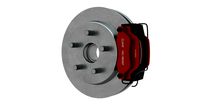
Brake Rotor
...3d model brake rotor for download as obj, fbx, blend, and dae on turbosquid: 3d models for games, architecture, videos. (1288076)
turbosquid
$3
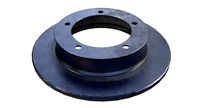
Brake rotor
...e 3d model brake rotor for download as 3ds, max, obj, and fbx on turbosquid: 3d models for games, architecture, videos. (1318483)
turbosquid
$30

rotor disk
... available on turbo squid, the world's leading provider of digital 3d models for visualization, films, television, and games.
turbosquid
$29

Rotor Slide
... available on turbo squid, the world's leading provider of digital 3d models for visualization, films, television, and games.
turbosquid
$8
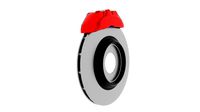
Brake Rotor
... available on turbo squid, the world's leading provider of digital 3d models for visualization, films, television, and games.
turbosquid
$1

Brake Rotor
... available on turbo squid, the world's leading provider of digital 3d models for visualization, films, television, and games.
turbosquid
free
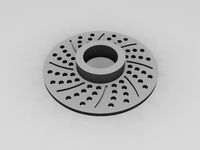
Brakr Rotor
... available on turbo squid, the world's leading provider of digital 3d models for visualization, films, television, and games.
turbosquid
$35

helicopter rotor system
...oyalty free 3d model helicopter rotor system for download as on turbosquid: 3d models for games, architecture, videos. (1598497)
Head
3d_export
$5

head
...head
3dexport
simulated female head.
3d_ocean
$5

Deer Head
...deer head
3docean
deer head
simple model of deer head with neck.
cg_studio
$25

Marble Head - Head A3d model
... - head a3d model
cgstudio
.ma - marble head - head a 3d model, royalty free license available, instant download after purchase.
turbosquid
$5
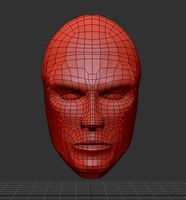
Head
...ad
turbosquid
royalty free 3d model head for download as max on turbosquid: 3d models for games, architecture, videos. (1230068)
turbosquid
free

Head
...
turbosquid
royalty free 3d model head for download as blend on turbosquid: 3d models for games, architecture, videos. (1276899)
turbosquid
free

The Head
...urbosquid
royalty free 3d model the head for download as max on turbosquid: 3d models for games, architecture, videos. (1386205)
3d_export
$10

bull head
...bull head
3dexport
bull head
3d_export
$5

girl head
...girl head
3dexport
head girl
3d_export
$5
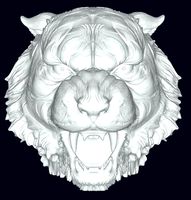
Tigger-head
...tigger-head
3dexport
tigger-head
3d_export
$5

head on a spear
...head on a spear
3dexport
head on a spear
